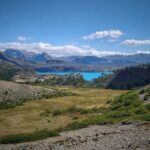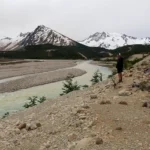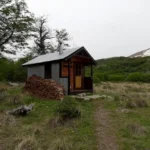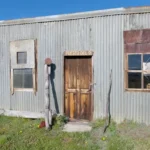Mountain Guides
Traverse Perito Moreno National Park
Walk through the wildest National Park amidst untouched surroundings and dreamlike landscapes. It is an ideal place for those seeking to experience nature, peace, and harmony at their finest, and it is truly worth experiencing. Trekking, camping, and birdwatching are just some of the many activities this hidden treasure has to offer.
Difficulty: Medium
Duration (recommeded): From 5 days onwards
Dates: October to April
Type: Private activity
Possible treks:
-Lácteo River Valley: San Lorenzo Trails and Témpanos lagoon
-Belgrano Lake Peninsula
-Azara
-Belgrano Lake Viewpoint
-Burmeister Lake
Short trails:
-Mount León Trail
-A Landscape with History
-Volcán Lake Viewpoint
-Unión de los Valles and Condorera Trail.
La mayoría de las fotos fueron tomadas por JANIS, un barilochense entusiasta y amante de la montaña. Te recomiendo que visites su blog de viajes: Patagonia Trekking
The Santa Cruz Patagonia is so vast and impressive that even today there are still mysterious and unexplored places, where human contact is minimal, preserving the magic of the untouched. One of these places is the Perito Moreno National Park.
Established in 1937 through decree No. 105,433 to protect the region's vast wealth, its 127,000 hectares are located in the southwest of the province, bordering the Republic of Chile.
It is important to note that the park's name should not be confused with the famous Perito Moreno Glacier, near the town of El Calafate, which was named after the biologist, geographer, and naturalist Francisco Pascasio Moreno.
Those wishing to reach the park should know that it must be done with extreme caution (only between November and April) depending on weather conditions, and prior notification to the park authorities is necessary.
Along with the spectacular views accompanying the route, you can see long walls rising in parallel along the mountain ridge, almost to the top, winding like a wall. Given its perfect formation, it is hard to believe its origin is not human; it is actually a natural formation.
Landscapes, Flora, and Fauna
In the park, we can observe the complete transition of defined environments between the steppe with typical shrubs and grasslands that dominate the landscape, and the Patagonian forests, with lenga being the main tree species, accompanied by ñire.
Snow-capped peaks further beautify the backdrop, and you can immediately spot the highest mountain in the province, the majestic Cerro San Lorenzo, which, at an altitude of 3,706 meters above sea level, seems to brush the sky in a mutual connection.
Glacial lakes dazzle with their clarity and varying shades, from blue to the characteristic turquoise and emerald of this protected area. Of the eight lakes present, only Lake Burmeister, located at 932 meters above sea level, drains into the Atlantic Ocean via the Santa Cruz River estuary, after passing through the Roble, Belgrano, and Chico rivers, crossing the entire Patagonia. The rest flow their waters towards the Pacific.
Regarding fauna, there are red and gray foxes, wildcats, guanacos, Patagonian skunks, and huemuls, the latter designated as a Provincial Natural Monument due to its status as an endangered species. Among the birds, you can see ducks, cauquenes, flamingos, choiques, condors, and more.
In addition to its high biological value, the area contains evidence of human presence over ten thousand years ago, in the form of shelters with rock paintings and obsidian outcrops in black, red, and brown— the only one in all of Southern Patagonia.
Trails and Refuges
There is a network of 100 kilometers of trails known as Hidden Lakes, most of which have been recently constructed with gentle slopes and based on sustainable design principles, making them enjoyable for families as well as experienced hikers.
There are also shorter trails that require only a few hours to traverse, as well as longer trails that can take between two to five days to complete.
More than ten strategically located shelters have capacities ranging from 3 to 6 people, serving as common spaces for hikers. Each includes mattresses and a wood stove.
It is worth noting that within the National Park, navigation is prohibited on all bodies of water in any form, as is making fires, hunting, or fishing.
Within the park, we find "Laguna del Mié," located 6 km along the way to Burmeister. Along the route, birdwatching is possible since it features an observation platform for enjoying the sights.
Photos: Janis from Patagonia Trekking
Are you going to come hike in our wildest park?
Views: 18
























